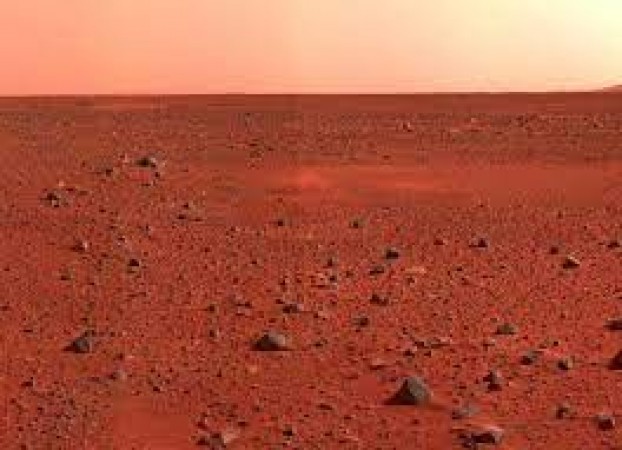
In the vast cosmic expanse, the planet Mars has long captivated our imagination. Its striking reddish hue has beckoned scientists and stargazers alike for centuries. But how did Mars become red? Let's embark on a cosmic journey to unravel the secrets behind the Martian color transformation.
Before we dive into the crimson transformation of Mars, it's essential to understand some basic facts about this enigmatic planet.
Mars, often referred to as the "Red Planet," is the fourth planet from the Sun in our solar system. It is a terrestrial planet with a thin atmosphere, and it boasts a striking resemblance to Earth in many ways.
Human fascination with Mars dates back to ancient civilizations. The Romans named it after their god of war, thanks to its fiery appearance. In modern times, Mars has been a subject of intense exploration, with numerous missions sent to unveil its mysteries.
Mars wasn't always red. In fact, its color transformation is a result of complex geological and chemical processes that have unfolded over eons.
When we observe Mars from afar, its predominant color appears to be a rusty red. This distinct hue is primarily due to the presence of iron oxide, also known as rust, on the planet's surface.
Iron oxide is abundant on Mars, and it reacts with the planet's thin atmosphere. This reaction leads to the formation of iron-rich minerals, giving the Martian landscape its characteristic reddish tint.
The Martian atmosphere is vastly different from Earth's, and this plays a crucial role in the planet's reddish appearance.
Mars has a predominantly carbon dioxide-based atmosphere, which lacks the protective ozone layer that shields Earth from harmful solar radiation. As a result, the surface is bombarded with high-energy UV rays, causing chemical reactions that contribute to the red coloration.
Mars is infamous for its colossal dust storms that can engulf the entire planet. These storms, filled with fine dust particles, further scatter sunlight and enhance the redness of the Martian surface.
To understand the transformation of Mars, we must delve into its climatic history.
Eons ago, Mars boasted vast liquid water bodies, including rivers and lakes. These waterways shaped the planet's surface, leaving behind intricate geological features.
As Mars gradually lost its atmosphere due to its smaller size and weaker gravity, its climate underwent dramatic shifts. The once-wet planet turned arid, leaving behind the remnants of its watery past.
Sunlight on Mars isn't quite the same as what we experience on Earth, and this unique solar interaction contributes to its reddish appearance.
The Martian surface reflects and scatters sunlight differently from Earth. Longer wavelengths of light, such as red and orange, are scattered less and absorbed more, enhancing the planet's red complexion.
During sunrise and sunset, Mars takes on an even deeper shade of red, creating a mesmerizing twilight effect. This optical illusion is a visual treat for Martian explorers and observers from afar.
While we've uncovered some of the key factors behind Mars' reddish hue, the planet continues to reveal new mysteries.
Upcoming missions to Mars, such as NASA's Perseverance rover and the Mars Sample Return mission, aim to collect samples from the Martian surface. These samples could provide invaluable insights into the planet's geological history and color evolution.
The dream of sending humans to Mars is becoming a reality, with plans for future crewed missions. Human presence on the Red Planet will enable in-depth studies of its geological processes and coloration.
Mars' transformation into the "Red Planet" is a testament to the dynamic nature of our solar system. From its ancient waterways to its modern dust storms, every facet of Mars' history has left its mark on the planet's vivid red canvas. As we continue to explore and unlock the secrets of Mars, one thing remains clear: the Red Planet will always be a source of wonder and inspiration for generations to come.
Kawasaki Unleashes the Powerhouse: Introducing the Ninja ZX-4R in India
Volkswagen India Enhances the Virtus with Stunning New Colors and Special Edition
Citroen is testing its C3X crossover sedan, will be launched next year